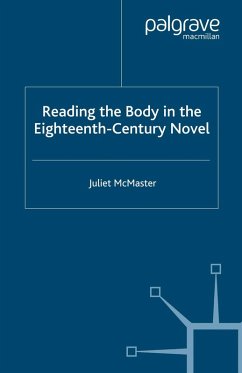McMaster's lively study looks at the various codes by which Eighteenth-century novelists made the minds of their characters legible through their bodies. She tellingly explores the discourses of medicine, physiognomy, gesture and facial expression, completely familiar to contemporary readers but not to us, in ways that enrich our reading of such classics as Clarissa and Tristram Shandy , as well as of novels by Fanny Burney, Mary Wollstonecraft and Jane Austen.
Dieser Download kann aus rechtlichen Gründen nur mit Rechnungsadresse in A, B, BG, CY, CZ, D, DK, EW, E, FIN, F, GR, HR, H, IRL, I, LT, L, LR, M, NL, PL, P, R, S, SLO, SK ausgeliefert werden.
'Offering insight into the ways in which eighteenth-century novelists expected their readers to draw on common understandings about expression, gesture and character, this is a lively and useful study.' - Times Literary Supplement
'McMaster productively alerts us to the rich languages of the body in the eighteenth century by both parsing out their antecedents and illuminating the prevalence of expressive bodies in the novelistic tradition.' - Tita Chico, Eighteenth-Century Studies
'McMaster productively alerts us to the rich languages of the body in the eighteenth century by both parsing out their antecedents and illuminating the prevalence of expressive bodies in the novelistic tradition.' - Tita Chico, Eighteenth-Century Studies


